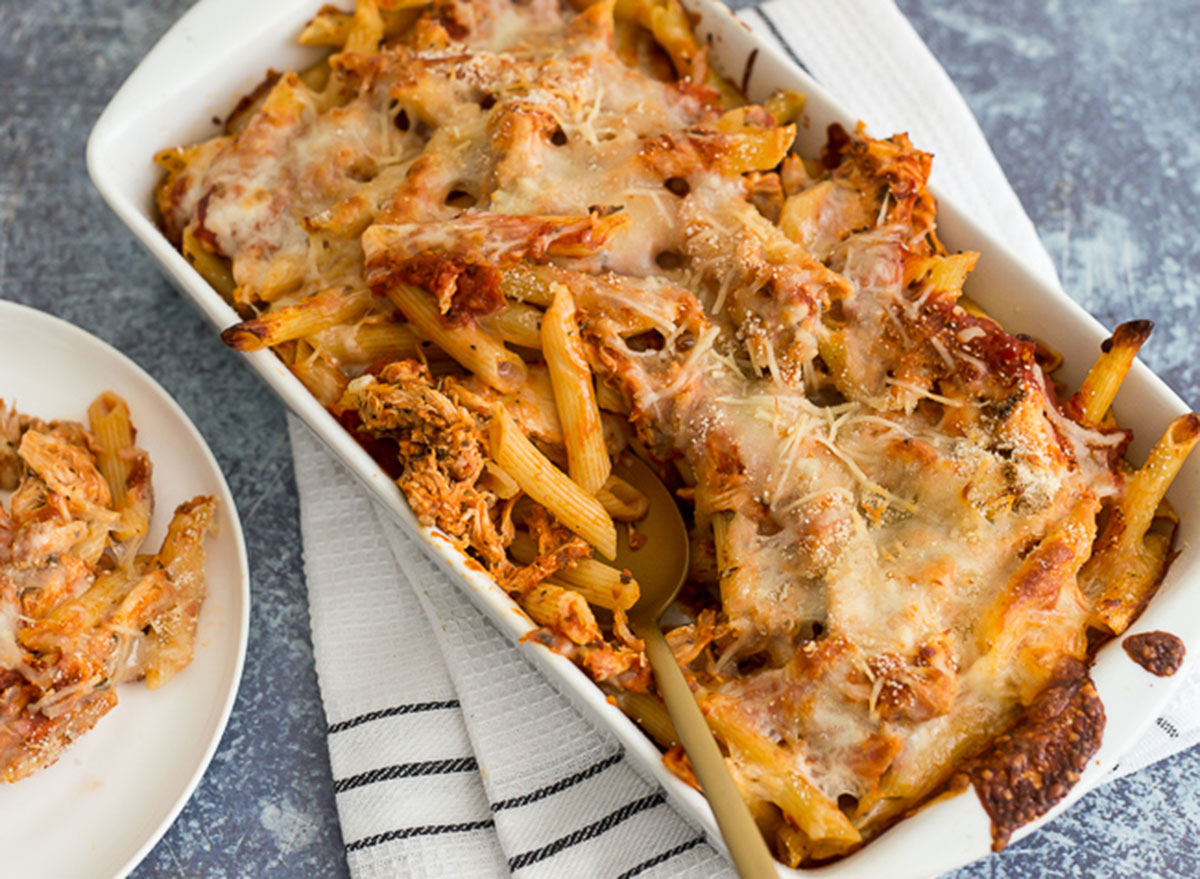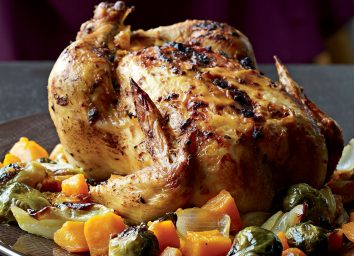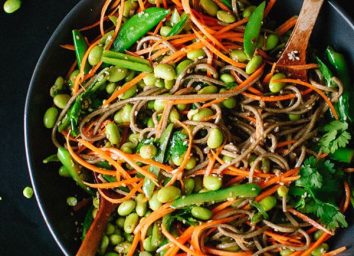Three Ways To Make a Healthy Rotisserie Chicken Dinner, According to an RD
Rotisserie chicken has incredible potential. It's quick, inexpensive, easy, and can be turned into a multitude of delicious dishes. Here's a look into buying, storing, and preparing the store-bought bird and how easy it is to add it to your everyday meal repertoire.
The rotisserie chicken revolution
Many folks are looking to simplify meals, especially dinner, during the hectic workweek. And what could be more convenient than a delicious, hot, ready-to-eat chicken that was flavored and cooked on a rotating spit? With a precooked bird, there's no need to handle raw chicken or worry about disinfecting your counter, and you can shave off at least 15 minutes from your dinner routine.
In 1985, Boston Market (originally called Boston Chicken) introduced rotisserie chicken when they started specializing in chicken. Pretty soon, the concept of bringing home a ready-to-eat chicken (served with several sides) for a prep-free family dinner that felt home-cooked was embraced by the public. Over the years, such shortcuts became a go-to for savvy home cooks—and supermarkets and club member stores responded to the demand.
According to the National Chicken Council, rotisserie chicken sales in 2018 were close to 900 million, with another 700 million expected to be sold at the retail level. Rotisserie chicken has become a household phenomenon, and if you're not on board—you should be!
Purchasing your bird
Rotisserie chicken is made from smaller chickens and cooked whole. The chickens are processed between 6 to 8 weeks of age and weigh between 2 1/2 to 3 1/2 pounds. Markets will cook rotisserie chicken in the morning and place them on a heated shelf to keep them warm. Some stores offer cooled, cooked chickens, which are kept in refrigerated grab-and-go displays.
It's possible your local store also provides the option of rotisserie chicken meat off the bone so you have even less work to do at home. On average, each whole rotisserie chicken will yield 4 cups of shredded chicken off the bone, which is perfect for a family of four. The only exception is Costco—their rotisserie chickens are larger and yield more meat.
Reading the label
There are several different terms used to describe how a rotisserie chicken was raised:
- "Free-range" chickens have some access to the outdoors. According to the National Chicken Council, there's no federal government definition of "free-range," so the U.S. Department of Agriculture (USDA) approves these label claims on a case-by-case basis.
- "Cage-free" chickens are not raised in cages and are free to roam around in their large, open houses.
- The "USDA Certified Organic" seal is regulated by the U.S. Department of Agriculture. The seal means that the chicken has been fed only certified organic feed made with corn and soybeans. The chicken also must be free-range (have outdoor access) and not be given antibiotics. Organic chickens may have been vaccinated against common diseases.
- Labels like "no added hormones" or "no added steroids" are more of a marketing ploy than a differentiator—chickens raised in the U.S. are never given added hormones or steroids to begin with. Using natural or artificial hormones on chickens raised for food is against FDA regulations.
- "Enhanced" chicken has been prepped with a marinade or ingredients like water, salt, sugar, chicken broth, and seasonings (like garlic). If any type of flavoring has been added to the chicken, it must be clearly labeled as such on the front of the package. The label must list all the ingredients and their quantities.
- According to the U.S. Department of Agriculture, a chicken labeled as "natural" has no artificial ingredients, coloring ingredients, or chemical preservatives.
Nutritional info for rotisserie chicken
Three ounces (85 g) of skin-on rotisserie chicken with seasoning has:
- 219 calories
- 19.5 g protein
- 16 g fat (4.2 g saturated fat; 7 g monounsaturated fat)
- 500–550 mg sodium
Three ounces (85 g) of rotisserie chicken without the skin and seasoning has:
- 172 calories
- 21 g protein
- 10 g fat (2.4 g saturated fat; 4 g monounsaturated fat)
- 500–550 mg sodium
By removing the skin, you can shave off about 20 percent of the calories and decrease the saturated fat by over 40 percent. Rotisserie chicken is also an excellent source of niacin, phosphorus, and selenium, and provides smaller amounts of vitamin B12 and pantothenic acid.
The sodium content is on the higher end for chicken (depending on how it's flavored). If sodium is a concern, then opt for the non-flavored birds.
When it comes to separating the dark versus white meat, you need to remember that rotisserie chickens are smaller birds. As such, you really can't separate the dark meat (thighs and drumsticks) from the white meat (breast and wings). Plus, you don't want to waste any of that delicious meat.
Three healthy dinner recipes to try
Once you get your bird home, there are so many dishes you can whip up. Try the following recipes from my new cookbook, The Best Rotisserie Chicken Cookbook.
Rotisserie Chicken, Kale, and White Bean Salad
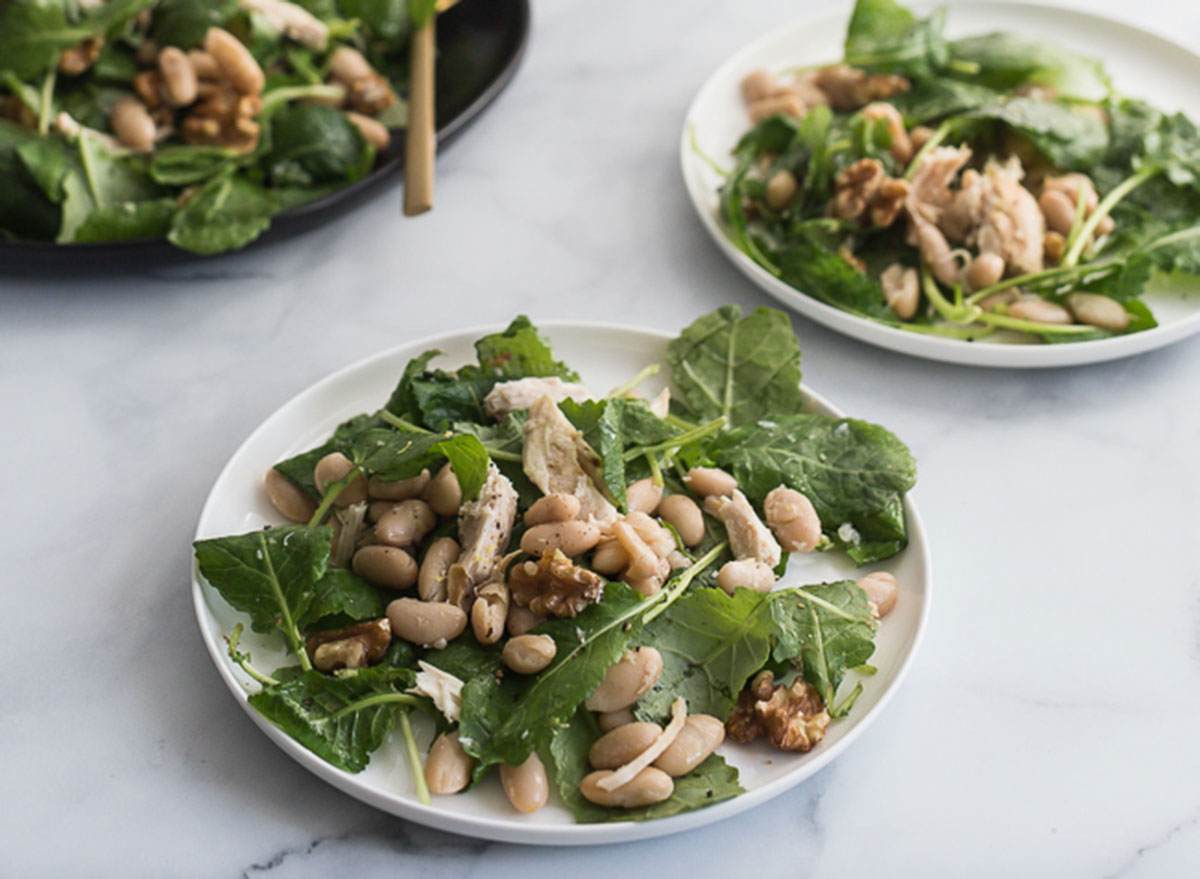
Get the recipe here.
Rotisserie Chicken Parm Casserole
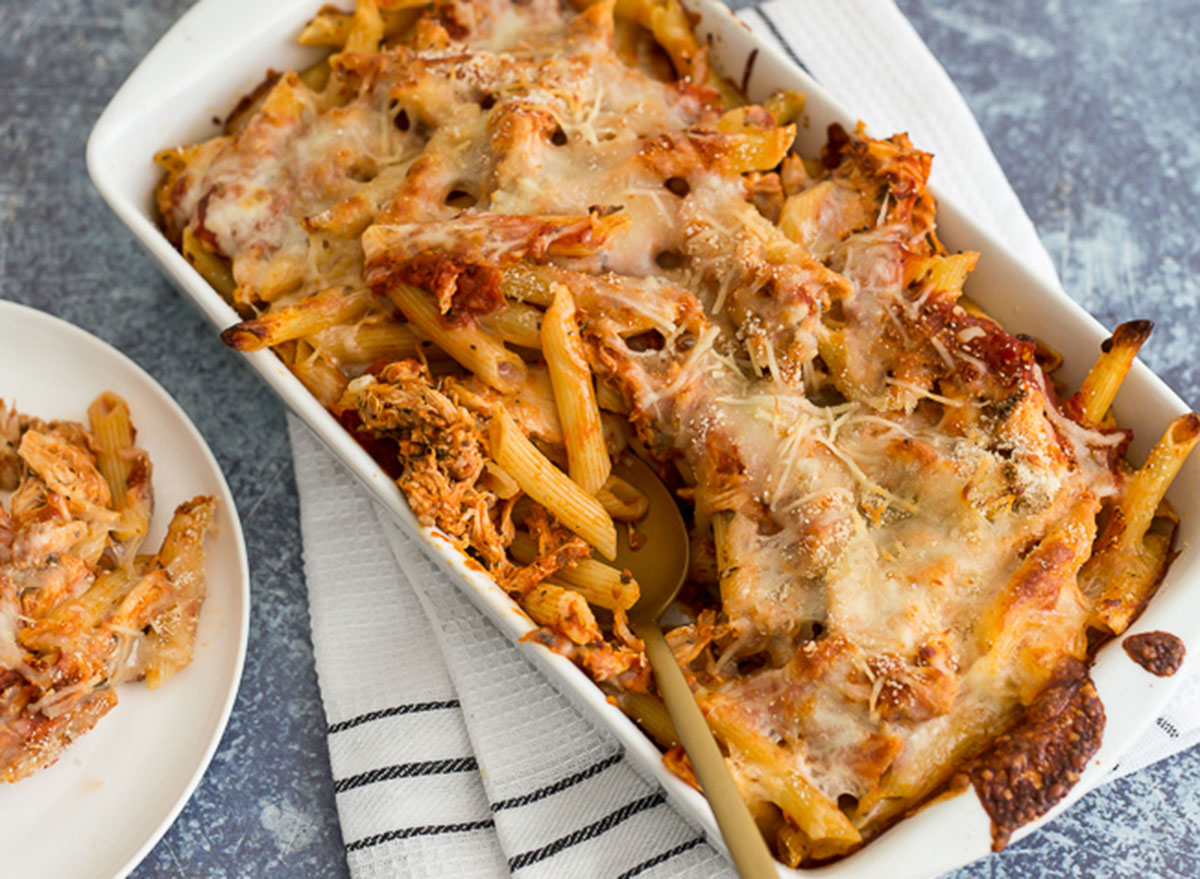
Get the recipe here.
Mediterranean Rice Bowl with Rotisserie Chicken
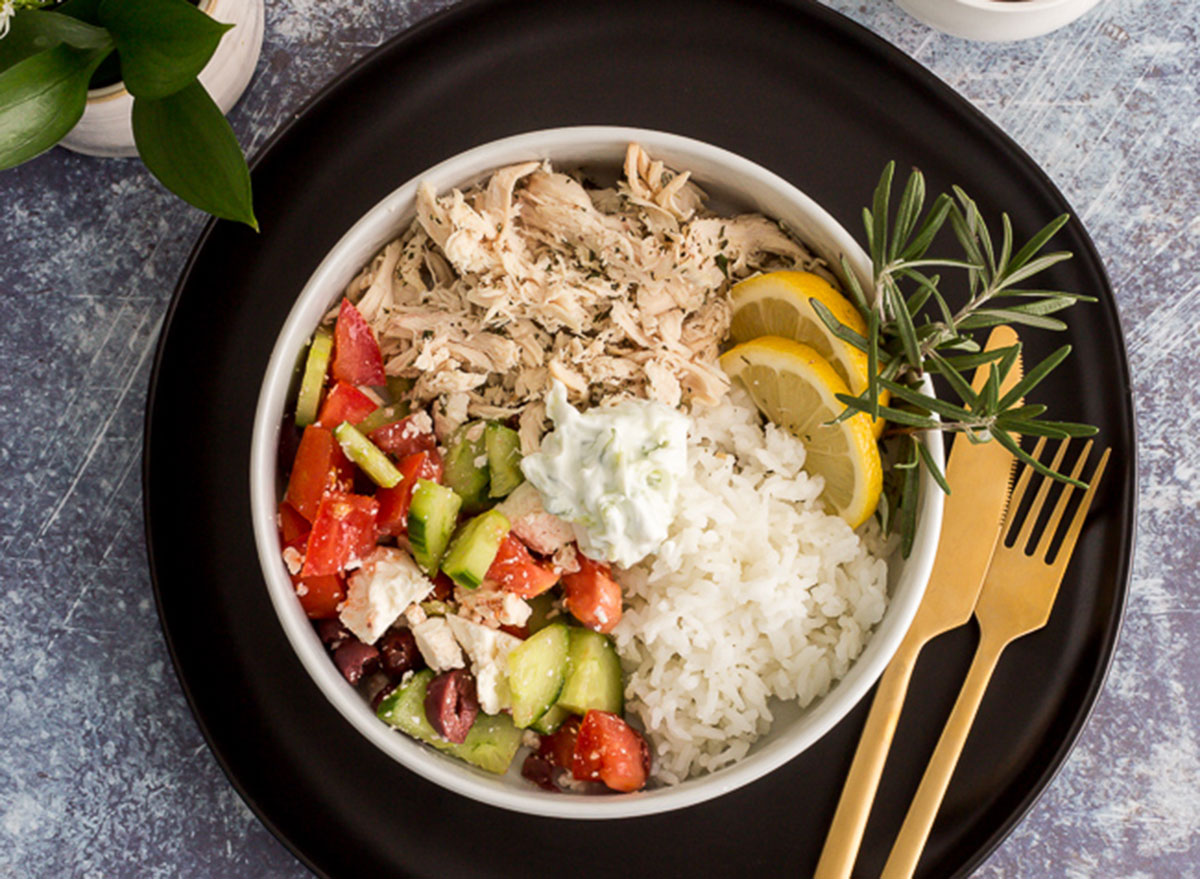
Get the recipe here.
